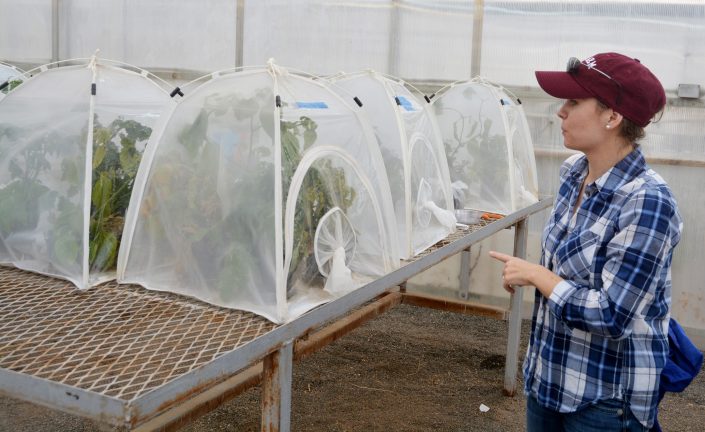Insecticides are becoming ineffective in quelling potato pests, study says

Image: Texas A&M AgriLife
The potato industry may be losing a mainstay in the battle against psyllids, according to a recent Texas A&M AgriLife Research study.
Ada Szczepaniec, an AgriLife Research entomologist in Amarillo, said while there may be varying degrees of resistance to neonicotinoid insecticides in populations of psyllids across Texas, her recent study indicates they’ve lost their punch.
“We are able to provide strong evidence that these insecticides no longer suppress populations of psyllids below desirable levels,” said Szczepaniec, who is also an assistant professor in the Department of Entomology in the College of Agriculture and Life Sciences. “However, there may be some biological control measures to help in this ongoing battle against the potato psyllid.”
The potato psyllid is a tiny insect with sucking, piercing mouthparts that transmits a bacterium, Candidatus Liberibacter solanacearum or Lso, which causes a disease called zebra chip and can cause tremendous losses to producers, she said. Producers have used the neonicotinoid insecticides to protect their solanaceous crops, mostly potatoes, in the past.
Szczepaniec said the study, funded by the Texas Department of Agriculture, indicates applications of neonicotinoid insecticides at planting, which are a considerable cost for producers, should be replaced with investments in post-emergence applications of insecticides other than neonicotinoids.
Integrating predators in suppression of psyllids could also be considered,especially when incidence of Lso is low and the threat of zebra chip disease is decreased, she said. However, more research is needed before recommendations regarding biological control can be made.
Her study included colonies of the potato psyllid from all major potato-producing areas of Texas. These colonies were established and maintained in the greenhouse for at least two generations before experiments examining their resistance to neonicotinoid insecticides began.
“Over the course of a year and a half, we completed testing the majority of the populations of psyllids for resistance to imidacloprid and thiamethoxam,” Szczepaniec said.
Based on the Insecticide Resistance Action Committee definition of resistance, “heritable change in the sensitivity of a pest population that is reflected in the repeated failure of a product to achieve expected level of control,” the potato psyllid populations across Texas are resistant to both neonicotinoid insecticides, she said.
Szczepaniec conducted a second study to identify alternative biological controls. Surveys of all arthropods associated with three different potato types – a russet, a red and a chipping variety – were carried out at the AgriLife Research station near Bushland.
“While we have only one year of data to draw our conclusions, the survey has revealed trends in predator abundance that have important implications for potato production,” she said.

